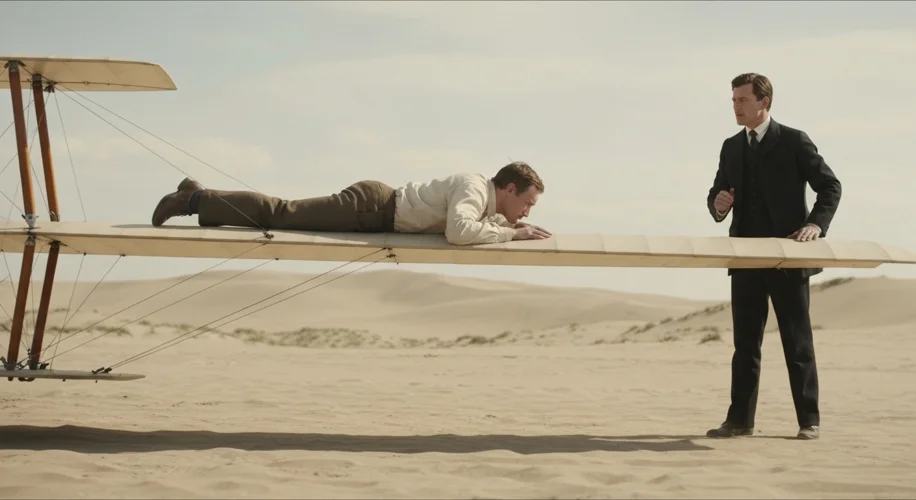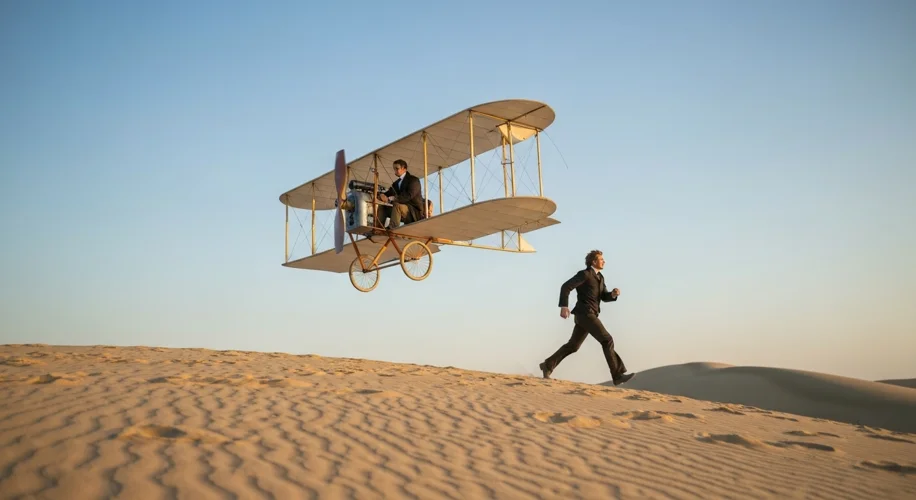The biting December wind whipped across the desolate dunes of Kitty Hawk, North Carolina, on that fateful day of December 17, 1903. For years, the dream of human flight had tantalized inventors and dreamers alike, a stubborn refusal by gravity to yield its dominion. Yet, on this windswept strip of sand, two brothers from Dayton, Ohio, were about to challenge that ancient decree.
Wilbur and Orville Wright were not your typical adventurers. They were bicycle mechanics, men of meticulous detail and quiet determination. Their fascination with flight began not with a sudden epiphany, but with a gradual, almost obsessive, study of birds in motion. They observed, they sketched, they built gliders, and they learned from the failures of others. Their workshop, filled with the scent of wood shavings and machine oil, was a crucible where theory met practice.

Their journey was fraught with setbacks. Early attempts at powered flight were met with frustration and near-disaster. They grappled with the complex problem of control – how to maneuver a machine through the air in three dimensions. While others focused on raw power, the Wrights understood that stability and a pilot’s ability to steer were paramount. They developed a system of wing-warping, a revolutionary concept that allowed them to control the aircraft’s roll, essentially allowing them to ‘lean’ into a turn.
The machine itself, the “Wright Flyer,” was a testament to their ingenuity. Constructed from spruce and ash, covered in muslin fabric, and powered by a small, custom-built four-cylinder engine, it was a delicate contraption that seemed impossibly fragile against the forces it aimed to conquer. The engine, not much larger than a man’s arm, was designed and built by their trusted mechanic, Charlie Taylor.
The morning of December 17, 1903, dawned cold and blustery. After a false start and a minor mechanical issue the previous day, the brothers were determined to make their attempt. The first turn of the coin landed in Orville’s favor. He lay flat on the lower wing of the Flyer, hands gripping the controls, as Wilbur steadied the machine. At 10:35 AM, the engine sputtered to life, its uneven cough echoing across the deserted beach. The Flyer began to move along its launching rail, gathering speed.
Then, it happened. For a mere 12 seconds, the Wright Flyer lifted off the ground, carrying Orville a distance of 120 feet. It was not a soaring, graceful arc, but a jerky, sputtering defiance of gravity. It was, however, heavier than air, powered, and controlled. It was, in essence, the birth of modern aviation.
This initial triumph was followed by three more flights that day. The longest, piloted by Wilbur, covered 852 feet and lasted 59 seconds. These were not yet the majestic flights we associate with aviation today, but they were the foundational steps. The brothers had proven that powered, sustained, and controlled flight was not a fantasy but a tangible reality.
The immediate impact of the first flight was surprisingly muted. The world was largely unaware of the quiet revolution that had taken place on the Outer Banks. The Wright brothers continued to refine their designs, facing skepticism and struggling for recognition. However, their achievement at Kitty Hawk was undeniable. It was the culmination of years of dedication, scientific inquiry, and sheer grit. It was a moment when human ingenuity transcended a fundamental limitation of nature, opening the skies to a future of unprecedented connection and possibility. The legacy of that windy December morning is etched not just in history books, but in every aircraft that graces our skies today.

